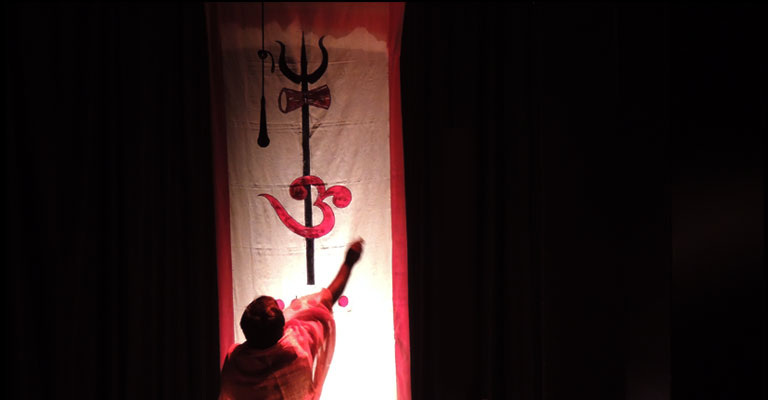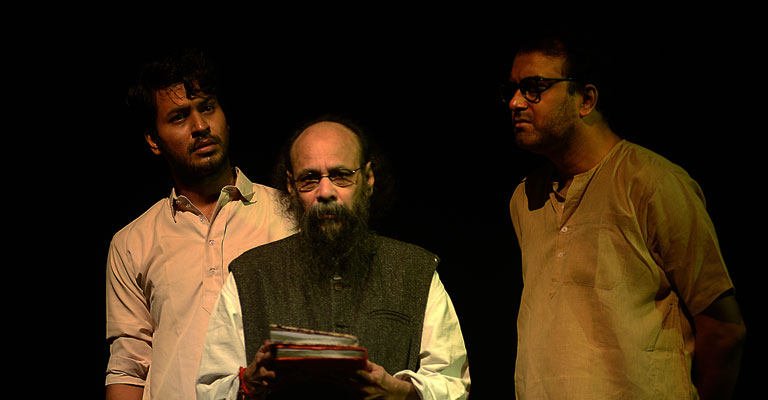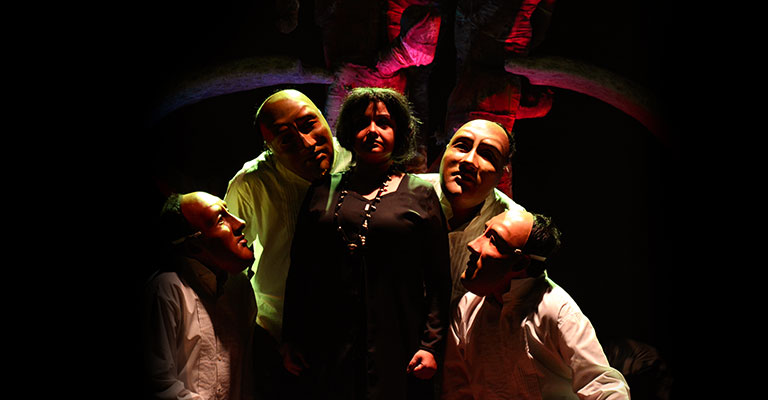Instead of looking for the next general he decides to go to lead the war himself. But Meghnad, most valiant of his sons arrives, intervenes, and offers his service. Ravana after some hesitation gives his consent and orders the ritual for his ablution, the act of”Abhisheka”.
The narrator then takes us to the celestial abode of Lord Indra, the God of the Gods. We find him shaken with fear for Meghnad who once made him accept a most humiliating defeat in direct confrontation. Indra devises to court the favour of Lord Shiva through Devi Uma (Durga) and win from him the power ammunition to kill Meghnad. Pleased with Indra and Rama’s devotion Uma sets forth to tempt Lord Shiva to an act of wild love-making and thus elicit from him a device for the slaying of Meghnad. Lord Shiva, even though seeing through the design, could not help to be enamoured by the charm of Parvati. On his advice, Indra is sent to Maya, the Dark Goddess of Magic and illusion, who gives the Weapons that, would see an end of Meghnad. The act of winning of “Astralabha” ends here.
With the narrator we now come to the pleasure-garden of Prince Meghnad where Pramila is waiting for her husband. On getting the news of siege of Lanka and his army, Pramila, with the force of her warlike Amazons, sets forth to free Lanka and the Prince from the enemy’s clutch. But before the majestic female troupe, resplendent with the glory of the heavenly powers,
Rama reverently makes way for the army to enter the city of Lanka. Pramila and Meghnad, who were rejoicing their union, prepare and brace themselves for the fateful vigour and prepare for a battle that would be decisive. Hence ends act “Samagama”.
The narrator now comes to the act of ‘Preparation for the battle’ or “Udyog”. In both of the camps, of Rama and Ravana the Preparation is showed with great detail. One is held by Maya, Lakshmana, brother of Rama goes deep in the heart of the offers his devotion to the War-goddess and asks for her blessings. It is granted upon him, on the way, he meets Lord Shiva, protector of Lankan Dynasty, who also gives way to him. Heaven and earth join hands to wreck Meghnad. Unaware of all the fateful design Meghnad takes leave of his beloved wife and Parents and sets out to the battle. Only a shadow of an omen flickers in the heart of Pramila, who perceives this could be their last meeting on this earth.
The fifth act, the slaying of the Hero or “Dadh” begins with Lakshmana and Bivishana, the traitor- brother of Ravana; Bivishana leads Lakshmana through to the secret passage of the Nikumbhila temple where Meghnad, after offering his pray would attain invincibility, while unarmed and busied with the rituals, Meghnad was confronted by the duo and challenged to a war. Meghnad asks their leave to collect his weapons according to the charter of the war regulations. But Lakshmi declines and empowered by Maya, kills him in an unjust fight. Bivishana also feels a pang of conscience over the fall of the mighty hero and laments his own plight as a traitor.
The eight and the last act, the narrator leads us to the scene of cremation where pyre is lit for Meghnad. Pramila also climbs the fiery bed where her husband is lying. An armistice is declared by Rama for the funeral. The whole city of Lanka mourns the death of Meghnad, the last of the Mohican.

















